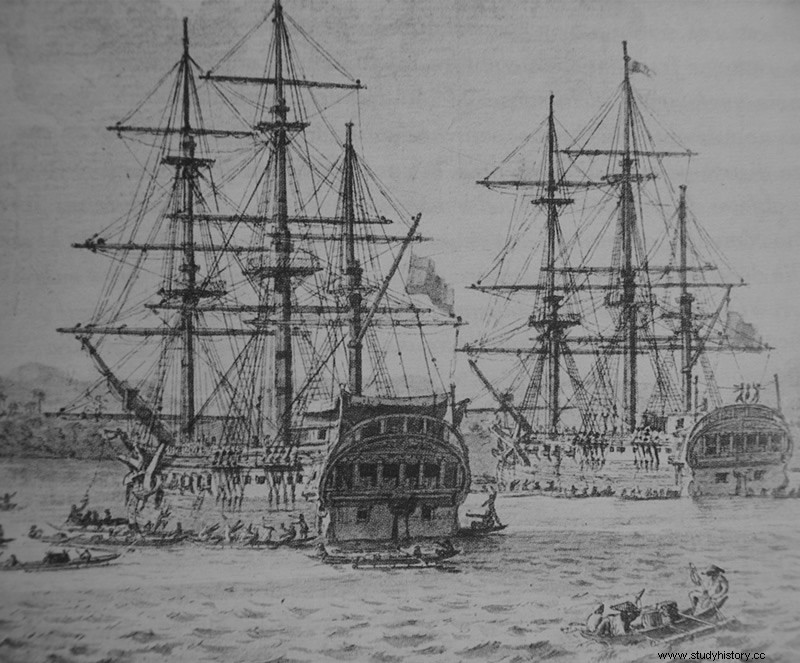Although it bears the name of Malaspina It was an expedition led by the sailors Alejandro Malaspina and Jose Bustamante . Its main objectives were to go around the world (emulating Elcano) and make an exhaustive study (flora, fauna, mines, cartography, etc.) of all the possessions of the Crown (like James Cook) – it is necessary to remember that in 1789 the Spanish Crown still extended through Europe, America and the Philippines -.

The Italian sailor Malaspina presents his (political and scientific) project to the Spanish monarch, Carlos III . With the support of Antonio Valdés , Minister of the Navy, the project is approved on October 14, 1788.
The king ordered the construction of two corvettes in Cádiz, called Atrevida y Descubierta (like Cook's). Led by Malaspina and Bustamente. 204 sailors are selected to accompany 2 doctors, 2 chaplains, a cartographer, four pilots, six draughtsmen and three naturalists. On July 30, 1789 they set sail from Cádiz on a journey that will last five years.
It leaves for Montevideo, Buenos Aires to Patagonia, crossing Cape Horn to continue, bordering the American continent, towards the North. They were looking for the passage between the Pacific and the Atlantic to the North, reaching Alaska where they mapped the area but did not find the passage. They cross the Pacific with a stopover in Guam, border the Marianas and arrive in the Philippines in March 1972. In Manila the ships separate to study the coasts of the islands. They come together again to reach New Zealand and Australia (where they also map the area). Here they consider continuing to Africa, rounding the Cape of Good Hope, or returning to America and going home. It is not clear why but they decide to return across the Pacific to Peru and from there to home. They arrive in Cádiz in March 1794. The expedition has been a complete success (unknown territories have been mapped, scientific experiments have been carried out, native flora and fauna have been studied and the situation of the Crown territories has been explored).

They are greeted as heroes. A report of the expedition is prepared, Scientific-political trip around the world , who is presented to the new monarch Carlos IV . But in this country (whose second national sport, after siesta, is envy) everything could not be rosy, so, the ineffective king's favorite, Godoy (strong man of the Crown) was jealous of Malaspina and sought his disgrace. He accused him of being a revolutionary and a conspirator, locking him up for 10 years. After leaving prison (at Napoleon's request), the emperor wanted to win him over to his cause, but the sailor declined the offer and retired to Italy where he died in 1810. Bustamante fared better since he was governor of Montevideo.
Despite Godoy, the report was not destroyed and in 1885 it was published by Pedro de Novo y Colson . It details nautical charts, mining reports, studies of more than 500 species and 14,000 plants, ethnic drawings and landscapes... one of the most important projects of all time that almost fell into oblivion.
Source:The Spanish Gesta – José Javier Esparza
Photos:Wikipedia

